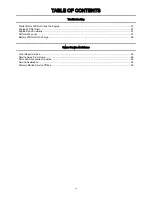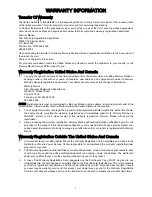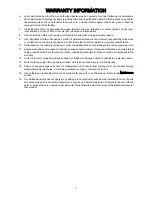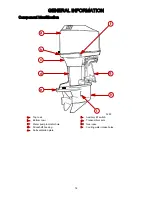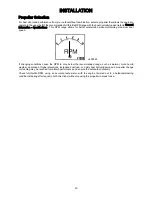
GENERAL INFORMATION
14
•
A rapid reduction in speed. This will cause occupants to be thrown forward, or even out of the boat.
•
Impact damage to the outboard and/or boat.
Keep in mind, the most important thing you can do to help reduce injury or impact damage during an impact is
control the boat speed. Boat speed should be kept to a minimum planing speed when driving in waters known to
have underwater obstacles.
After striking a submerged object, stop the engine as soon as possible and inspect it for any broken or loose parts.
If damage is present or suspected, the outboard should be taken to an authorized dealer for a thorough inspection
and necessary repair.
The boat should also be checked for any hull fractures, transom fractures, or water leaks.
Operating a damaged outboard could cause additional damage to other parts of the outboard, or could affect control
of the boat. If continued running is necessary, do so at greatly reduced speeds.
!
WARNING
Avoid serious injury or death from loss of boat control. Continued boating with major impact damage can result
in sudden outboard component failure with or without subsequent impacts. Have the outboard thoroughly
inspected and any necessary repairs made.
Exhaust Emissions
BE ALERT TO CARBON MONOXIDE POISONING
Carbon monoxide is present in the exhaust fumes of all internal combustion engines. This includes the outboards,
sterndrives and inboard engines that propel boats, as well as the generators that power various boat accessories.
Carbon monoxide is a deadly gas that is odorless, colorless and tasteless.
Early symptoms of carbon monoxide poisoning which should not be confused with seasickness or intoxication,
include headache, dizziness, drowsiness, and nausea.
!
WARNING
Avoid the combination of a running engine and poor ventilation. Prolonged exposure to carbon monoxide in
sufficient concentration can lead to unconsciousness, brain damage, or death.
GOOD VENTILATION
Ventilate passenger area, open side curtains, or forward hatches to remove fumes.
ob00316
Example of desired air flow through the boat.
POOR VENTILATION
Under certain running and/or wind conditions, permanently enclosed or canvas enclosed cabins or cockpits with
insufficient ventilation may draw in carbon monoxide. Install one or more carbon monoxide detectors in your boat.
Although the occurrence is rare, on a very calm day, swimmers and passengers in an enclosed area of a stationary
boat that contains or is near a running engine may be exposed to a hazardous level of carbon monoxide.

